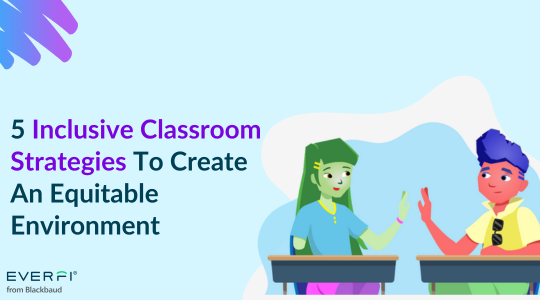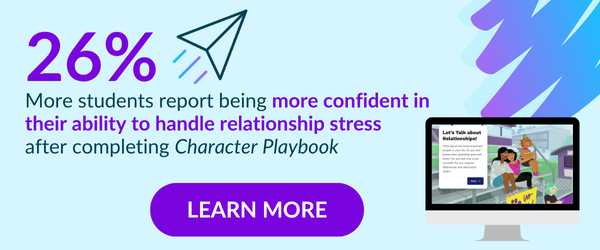Building a classroom community in which all students feel a sense of belonging is an area most educators spend weeks of school, especially the first few weeks of school, focused on. We know that creating a safe space for different learning styles, genders, religious, racial, and ethnic backgrounds goes well beyond the first month back in our classrooms. In the classroom, inclusive teaching strategies include a wide range of teaching techniques that accommodate the diverse backgrounds, learning styles, and abilities of students. These techniques aim to create an inclusive learning environment that recognizes and honors the distinct needs and strengths of each student.
Through the use of inclusive teaching strategies, teachers can establish a learning environment that values, supports, and empowers all students to achieve their goals. The ultimate objective of inclusive teaching strategies is to guarantee that every student has equitable access to learning and feels a sense of belonging in the classroom. How can we ensure inclusivity is at the forefront of our daily instruction? Use these inclusive classroom strategies to help get you started with building a positive classroom culture:
General Classroom Inclusivity Tips
Get to Know Your Students and Let Them Get to Know You
Establishing a bond with your students takes time. Creating opportunities for students to share their interests, struggles, and aspirations with you and sharing yours with them builds a connection that can continue to grow. Some teachers like to use surveys or journals to find out more about their students. Think about what has worked for you in the past and what has not worked. What is something you can do consistently to connect with each student?
Researchers have found that teachers who learn about their students and build relationships with them may experience a boost in their teaching effort, contentment, and confidence, which can yield use of more advanced and highly effective teaching techniques. Check out the video below in which Ms. Rose uses a simple teaching method to get to know her students, share about herself, and give students some ideas about how she is going to help them learn.
Create a Safe Space for Students to Share
Students bring their whole selves to school and that includes good and bad experiences that occur in daily life. Educators are on the front lines of addressing these issues that can impact students’ engagement and academic performance. Ways that educators can promote a safe space for students to share their thoughts and feelings follows:
- Model strategies like “I see, I think, I wonder” to teach students how to digest and share something they learned.
- Prevent and address acts of mental and physical harm like bullying and violence.
- Teach empathy and compassion to foster positive interactions between students.
- Create group norms to foster fruitful conversations that allow the sharing of differing opinions in a respectful way.
Deliver Instruction in a Variety of Ways
There is increasing evidence that shows that gamified lessons positively influence student engagement. To appeal to different learning styles, reimagine existing lessons, especially those that feel lecture heavy, with fresh videos, books, and gamified digital activities. A study conducted by the Canadian Journal of Action Research comparing student engagement with gamified lessons versus alternative traditional lessons found that students showed higher class average scores for both focus and attentiveness during digital game-based learning six out of eight times.
Varied learning content that appeals to different student interests is just as essential as the instruction style. Provide students the chance to learn about a social justice movement, history, or current events through different mediums and have the unit culminate in a team-based project.
Choose Relevant Literature
Students should be provided with literary works that highlight the human experience. Include stories about people who are indigenous, refugees, and vary in racial/ethnic background, as well as stories that include characters with a physical or learning disability. Dig into these 11 Books to Add to Your SEL Lessons for book lists across grade levels for your classroom library.
Invite Guest Speakers to Share Their Stories
According to an article published in the Economics of Education Review, when students can identify with a teacher or guest speaker’s racial or ethnic background they are more likely to perform better and be more engaged because they see a potential role model or mentor in that person. By inviting a guest speaker as a part of an inclusive classroom activity, you are providing your students access to an authentic learning experience they may never otherwise have.
Case Studies of Inclusive Classroom Strategies
Case Study 1: Inclusive Classroom Strategies: Race, Ethnicity, and Gender
Stacey Kane, a white female teacher with 22 years of experience, was teaching a social studies class to 8th graders. The students’ backgrounds were diverse: students primarily identified as male or female, most reported white as their ethnicity, and only 7% received free and reduced lunch.
In an effort to impart to students the principles and ideas upon which the United States was founded, she asked them to read the Bill of Rights. The chapter only mentioned the perspectives and experiences of white, property-owning men.
The following questions can help teachers think about whether their instruction was culturally responsive:
- Whose voices are included in the selected reading? Whose are missing?
- What are the implications of this for students’ understanding of history?
- What are their implications for students’ opportunity to see themselves in history?
- Are your pedagogical practices and behavioral expectations culturally responsive? Why or why not?
Case Study 2: Inclusive Classroom Strategies: Students with Disabilities
Eric Crouch, a white male teacher of 5th grade students, has a disability, attention deficit hyperactivity disorder (ADHD). His journey through school was laborious and that experience greatly influences how he teaches students.
His instructional pedagogy embraces differences in students’ way of learning and builds in conversations and actions that welcome all students into a supported learning community using the Universal Design for Learning (UDL) framework. This framework encourages teachers to present information in a variety of ways (e.g., diagrams, screencasting) and allow students to access content (e.g., video recordings) and express their learning of content in different ways (e.g., speaking vs. writing a story).
Eric uses what he learns about students to uncover resources and tools to facilitate their learning. For example, if he notices a child struggling to understand in whole group instruction, he may pull them into a small group and pose questions or show them a video to help them better think through the lesson and learn.
Learn more about the strategies that Eric uses here:
Inclusive Classroom Strategies FAQs
There are a host of considerations for improving inclusivity in the classroom. A recap of what was noted above along with some additional thoughts are addressed in the FAQ questions that follow.
What are resources for teachers to learn more?
The University of Illinois Chicago’s Center for the Advancement of Teaching Excellence provides in-depth resources on inclusive and equity-minded teaching practices. Topics covered include UDL, pronoun usage relative to gender identity, navigating social identity in the classroom, inclusive education practices, and note taking skills for students.
How to incorporate diversity into classroom instruction?
In addition to including literature about different cultures, races, and ethnic groups, educators are encouraged to celebrate heritage months like Asian American and Pacific Islander Heritage Month in May, be inclusive of traditions and holidays discussed such as the winter holidays in December (e.g., Christmas, Hanukkah, and Kwanzaa), and bring diverse guest speakers into the classroom who vary in age, gender orientation, race/ethnicity, religion, and ability. Other activities include listening to music, eating food, and engaging in practices that represent a variety of cultures.
What are the risks of a non-inclusive classroom?
When educators do not engage students in a way that motivates students to participate in learning, it can create inequity in classroom education access. In addition, students who do not feel included may exhibit disruptive behaviors.
There are many innovative teaching methods that promote inclusive instruction, such as culturally responsive teaching. Those methods foster character development and social emotional learning skills. EVERFI has aligned digital courses that focus on building empathy in students in grades 2-6 (The Compassion Project) and relationship skills in students in grades 6-9 (Character Playbook). The courses are available at no cost to schools.
![To say I have been pleased with the EVERFI team is an understatement. We are appreciative of the standards-based curriculum modules, the ease of [of use], and the aspect of them being self-graded. -Michele Pacheco, District Admin - Fresno Unified School District, CA](https://everfi.com/wp-content/uploads/2025/07/Quote_General_Understatement.png)

Leila is a K-12 Senior Implementation Manager in Calgary, AB. She works with schools across the Canadian prairies in AB, SK and, MB. Prior to working at EVERFI, she obtained her M.Ed and taught elementary school in Baltimore, MD, and Laramie, WY. Leila also served as an online instructor for Johns Hopkins University’s Center for Talented Youth.

Dr. Jaumeiko Coleman is the Vice President of Academic and Health Education at EVERFI from Blackbaud. In her role, she enjoys collaborating with colleagues across units, as well as external stakeholders on academic and career readiness and health education as a subject matter expert. Dr. Coleman’s career focus on spoken language and literacy has been infused in her work in public and private schools, public and private universities, and a not-for-profit association. She is a board member of Learning Disabilities Association of America.




